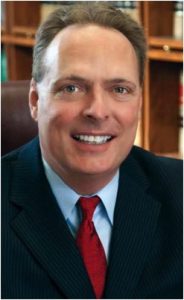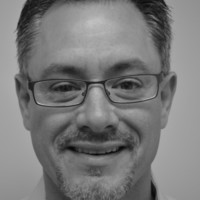By Maralisa Marra
Shinnston will receive nearly $70,000 in settlement funding, of about $290 million West Virginia will receive from lawsuits settled against opioid manufacturers in recent months.
Shinnston officials have said the city plans to put its funds towards the demolition of dilapidated properties that attract the use of drugs, as well as drug dealing.
Pharmacist and owner Yvonne West of Shinnston’s local pharmacy, ProCare Pharmacy, said she doesn’t think demolishing houses would directly address the problem.
“The people that walk the street, they just won’t have a place to go,” she said. “That’s all that’s going to do. They’ll find somewhere else to go.”
Several healthcare providers, as well as people in recovery, say the money could have a bigger impact if directed toward help for people with substance use disorder. Although funding is limited, the city could apply for more, or work with surrounding areas on a regional plan.
Shinnston may have a rare opportunity to help those struggling with homelessness and addiction because “it is

still a community unlike most areas,” and “everybody knows everybody in Shinnston,” said Lou Ortenzio, executive director of the Clarksburg Mission.
“Shinnston has a chance maybe to make a difference because of that [community] strength. You know, you’re not strangers to each other. You all are neighbors,” Ortenzio said.
Settlement is part of “a giant puzzle”
Over the last several months, West Virginia Attorney General Patrick Morrisey announced several settlements with opioid manufacturers Endo Health Solutions, Janssen Pharmaceuticals, Teva Pharmaceuticals, and Allergan, totaling $290 million for drug abatement efforts.

Shinnston’s share of the money recovered is 0.0968%, said Warren R. “Randolph” McGraw II, one of several attorneys who represent municipalities in separate lawsuits against the three branches of the opioid industry–manufacturers, distributors, and pharmacies–that many affected communities say are responsible for the epidemic.
“They targeted the blue-collar areas of the country where men and women go out and labor [in] physically hard jobs, and so they started marketing and selling this drug [OxyContin] as a cure-all for everything, basically,” McGraw said.
Of the settlement funding, 0.0968% of the $290 million dollars is $280,720. Shinnston will actually recover 24.5% of that sum which equals around $68,800, McGraw said.
Shinnston could still receive more money. McGraw noted that manufacturers only represent one of the three branches of the opioid industry–manufacturers, distributors, and pharmacies.
He also said that 72.5% of the money will go to a regional abatement fund, while another 3% will be held by the state. The state will be broken up into six regions, he said.
The city would have to apply for the rest of the money.
Also, more lawsuits are ongoing. While the state settled lawsuits with the “Big Three” opioid distributors in 2017 and 2019, including $37 million with distributor McKesson in 2019, and $20 million with Cardinal Health and $16 million with AmerisourceBergen in 2017, according to the Associated Press, cities and counties decided to take those same companies on in their own lawsuit in pursuit of more funding. On July 5, municipalities were scheduled to go to trial in a lawsuit against distributors AmerisourceBergen, Cardinal Health, and McKesson.
However, that trial was postponed.
In West Virginia, 54 counties and over half of the cities participated in the mass litigation. Huntington and Cabell County had decided to sue on their own, in an attempt to recover more money–$2.5 billion for a 15-year plan–for an area widely viewed as the epicenter of the opioid crisis.
The trial was postponed, according to The Herald-Dispatch, because on July 4, Senior Judge for the Southern District of West Virginia David A. Faber ruled in favor of the distributors AmerisourceBergen, Cardinal Health, and McKesson in the Huntington and Cabell County lawsuit.
McGraw said there are various ways in which each city and county can utilize their settlement funds. Counties have struggled to pay regional jail bills, he noted. Cities, meanwhile, have struggled to tear down abandoned buildings, he said. McGraw also said that the fund could assist cities with their police department costs, but he noted that these are “just a few examples.”
He said that hopefully on a regional level, the settlement funds for the region can go to treatment facilities.
“We could debate how cost effective perhaps this piece or that piece is, and it’s probably going to be different for every city and every county and every region of West Virginia, but it’s a giant puzzle and every piece needs to be addressed,” according to McGraw. He also noted that “it just comes down to the financial ability and willingness of the local governments.”
“I think that every piece of the puzzle is important,” McGraw said.
While city officials have previously said they wanted to spend the money on demolishing dilapidated structures, new Mayor Rodney Strait added that the city is early in the planning process and only recently learned how much money they would receive. “It’s kind of up in the air for us,” Strait said, “We haven’t made any plans on how to spend it.”

Recovery requires support
A group of about a dozen residents at the Mission in Clarksburg, who have personal experience with substance use disorder, recently met to discuss ways the money could be spent that would have helped them enter recovery.
The Mission offers a variety of programs that focus on recovery from substance use disorder. They offer shelter, sober living homes, 12-step programs, Bible studies, and recovery coaching, among other services.
They talked about many options like implementing better prevention programs in schools, recovery coaches, demolition of dilapidated buildings, sober living homes, harm reduction, and Suboxone clinics.
Residents said that for them to recover, support from others was crucial.
“When I came here [the Mission], I was in complete denial,” said one of the residents, Mike Wolford. “I was just looking for a bed, and I’m glad that the staff took me in, and I was able to realize that I had a lot of mental illness issues that I needed to work on that I was just pretending didn’t exist.”
“I wanted to be, you know, not outside anymore, but I’m so grateful for friends that helped me get here and Lou and everybody that took me in,” said Albert Aichele, another recovering resident. “I’m so grateful for that because it’s exactly what I needed–my life was a mess, and I needed off of drugs and alcohol, and it has been a blessing ever since.”
Chad Claypool reflected on why he went into recovery, as well.
“I knew if I stayed out there that I was going to spend the rest of my life in prison, so I came into recovery, went to rehab, I didn’t believe in God or anything like that, and I heard about this place [the Mission], and they said it was Christian based,” he said. “So, I was like, ‘You know, that’s the only thing I haven’t tried in life.’ I haven’t put my trust in God or believing in God to change my situation around, so I went from one rehab to this one, and yeah, since I’ve been here, I finally started believing in God which I never thought I would do. It really changed my life around.”
Residents said they believed support from others would also help others enter recovery. Of all the options they discussed, they believe money put toward recovery coaches would be the most effective at combating the overdose crisis. Peer recovery coaches are people in long-term recovery who use their lived experiences and training to help others enter recovery.
“I don’t think that demolition alone is going to actually solve anything because they’re still going to be homeless. They’re just going to have to find somewhere else to stay,” Wolford said.
Claypool had another idea that could potentially regenerate funds for the city, “A sober living house regenerates money, they charge them rent and everything else.”
He also noted those programs hold residents accountable and create structure and stability.
“Sober living helps people because then they have to go to [Narcotics Anonymous] or [Alcoholics Anonymous]–it’s more than just bringing them off the street,” Claypool said.
Residents were most in support of the idea of having recovery coaches readily available for anyone struggling with addiction in Shinnston and surrounding areas. A poll was taken, and recovery coaches took the lead.
While Shinnston’s money wouldn’t go far toward salaries, residents also said that recovery coaches can be part-time, and they are even accessible virtually. Help4WV offers recovery coach services both in person and virtually.
“Find people that are in recovery, and maybe they could be leaders like Lou,” said another resident, Alissa Buck.
Healthcare providers: help starts “on the ground”
The Clarksburg Treatment Center provides outpatient care to people struggling with opioid addiction. They offer medication-assisted treatment, which research shows saves lives and helps people achieve recovery. They offer multiple types of medication: methadone, buprenorphine, naltrexone, and Suboxone.

Medical Director at the Clarksburg Treatment Center Dr. Robert Phares said the office provides counseling first, noting that “so much of addiction is the mental, emotional side.”
Upon hearing of the $68,800 in settlement money coming to Shinnston, Phares’ mind immediately went to transportation.
“So I was thinking, ‘68 grand?” he said. “Could that buy a van? Could that be part of the ambulance service or the fire service?”
“I’ve got several Shinnston patients, and I know for certain that several times, they’ve had difficulty coming into their office visits,” Phares said.
West, pharmacist and owner of ProCare Pharmacy, and her employees have experienced a couple issues with people who are homeless throwing away backpacks of their belongings in the pharmacy’s trash bin. But rather than putting the funds towards the demolition of dilapidated buildings, West believes the best way to help abate the drug issue in the Shinnston area is to find someone–maybe a social worker, a recovery coach, or someone from a rehabilitation or recovery program–to connect people who are homeless and struggling with substance use disorder to detox, rehabilitation, and recovery programs.
If the city decides to use the funds on dilapidated properties, West noted some buildings could be converted into treatment facilities.
“They have to do something directly on the ground,” West said, “They have to go out, go down in these little camps that these people have, and basically have some bread and peanut butter, and go in there, and say, ‘Listen, we want to help you. What do you need? We want you out of this situation. What is it going to take?’”


